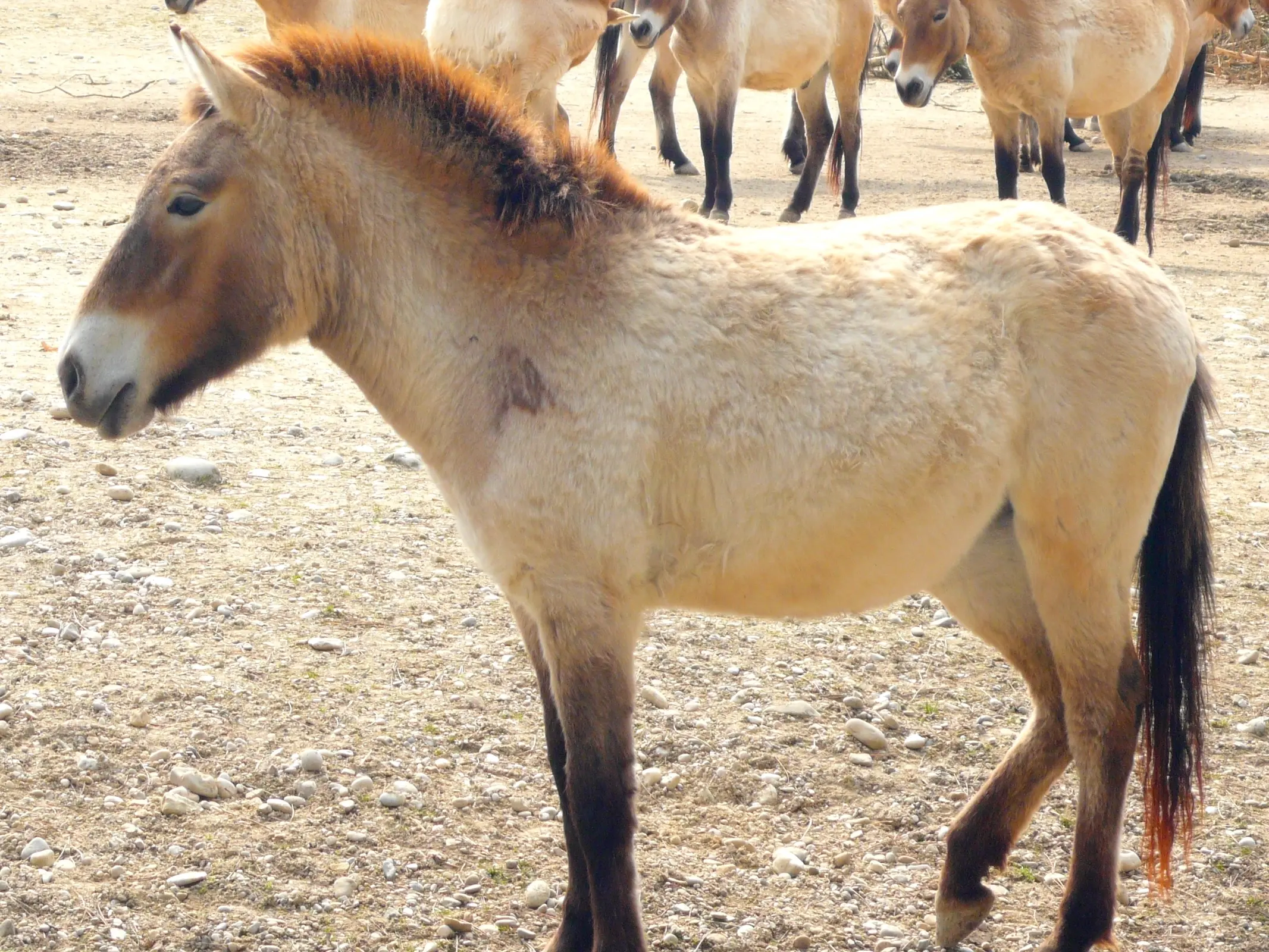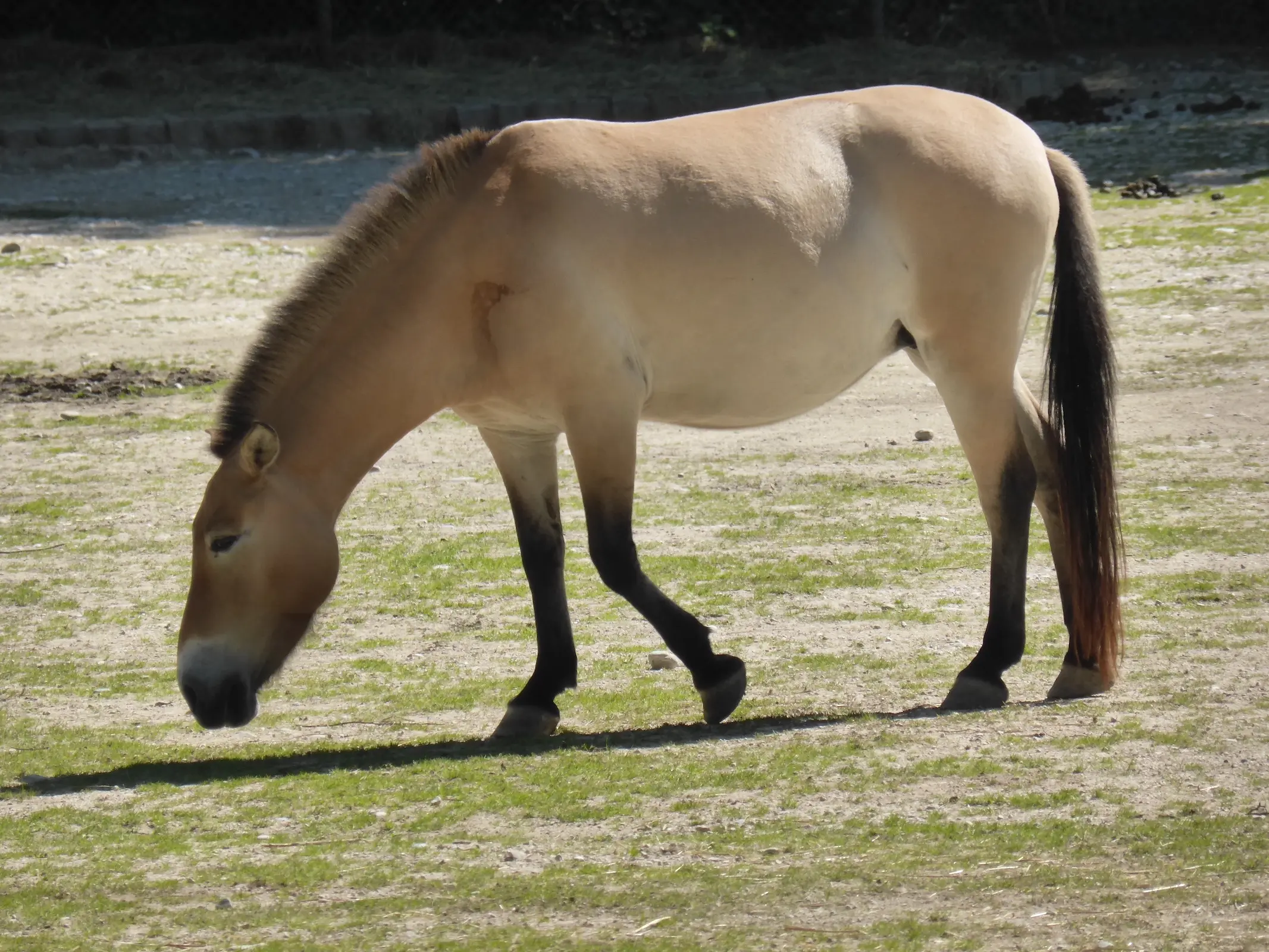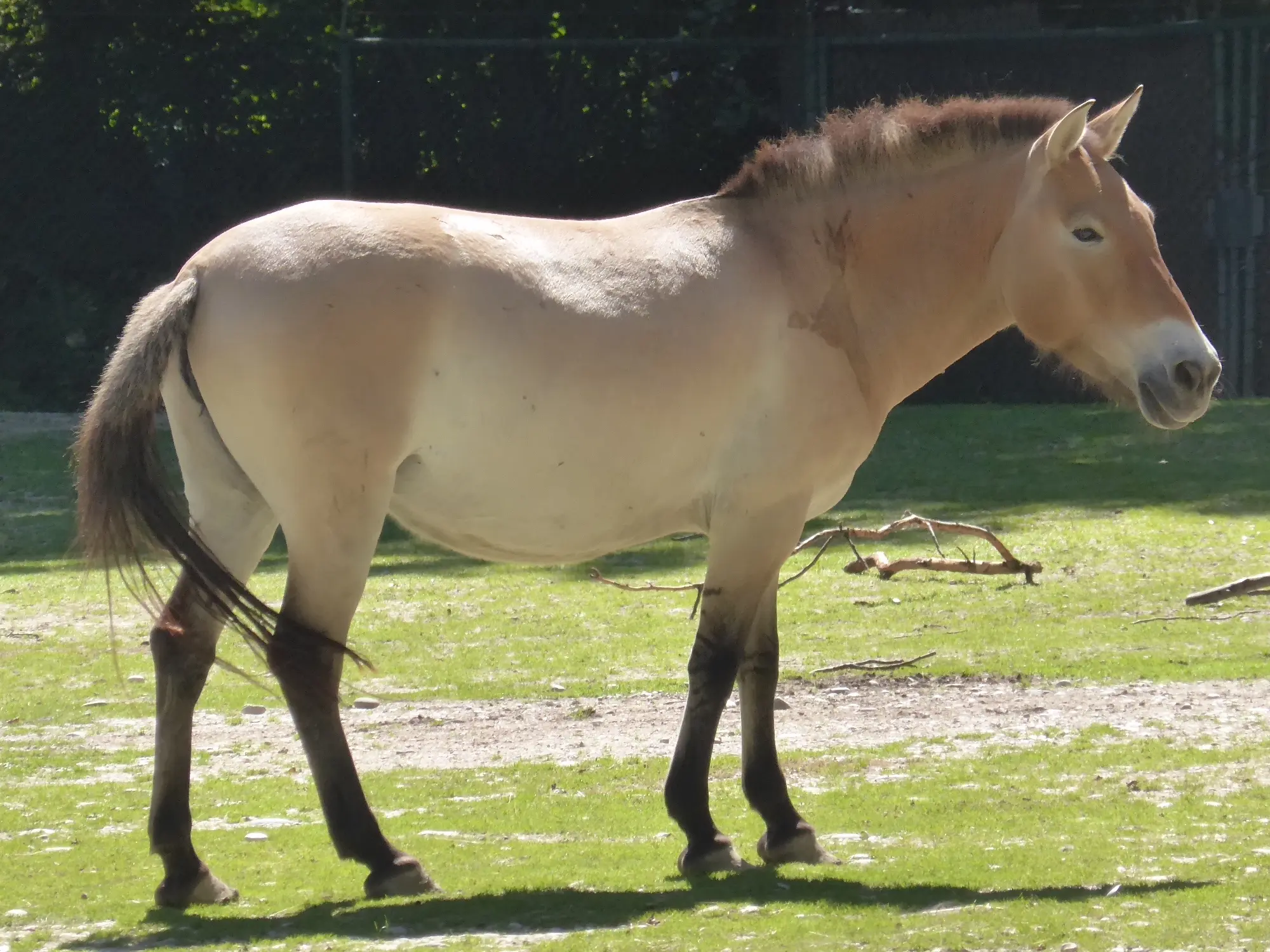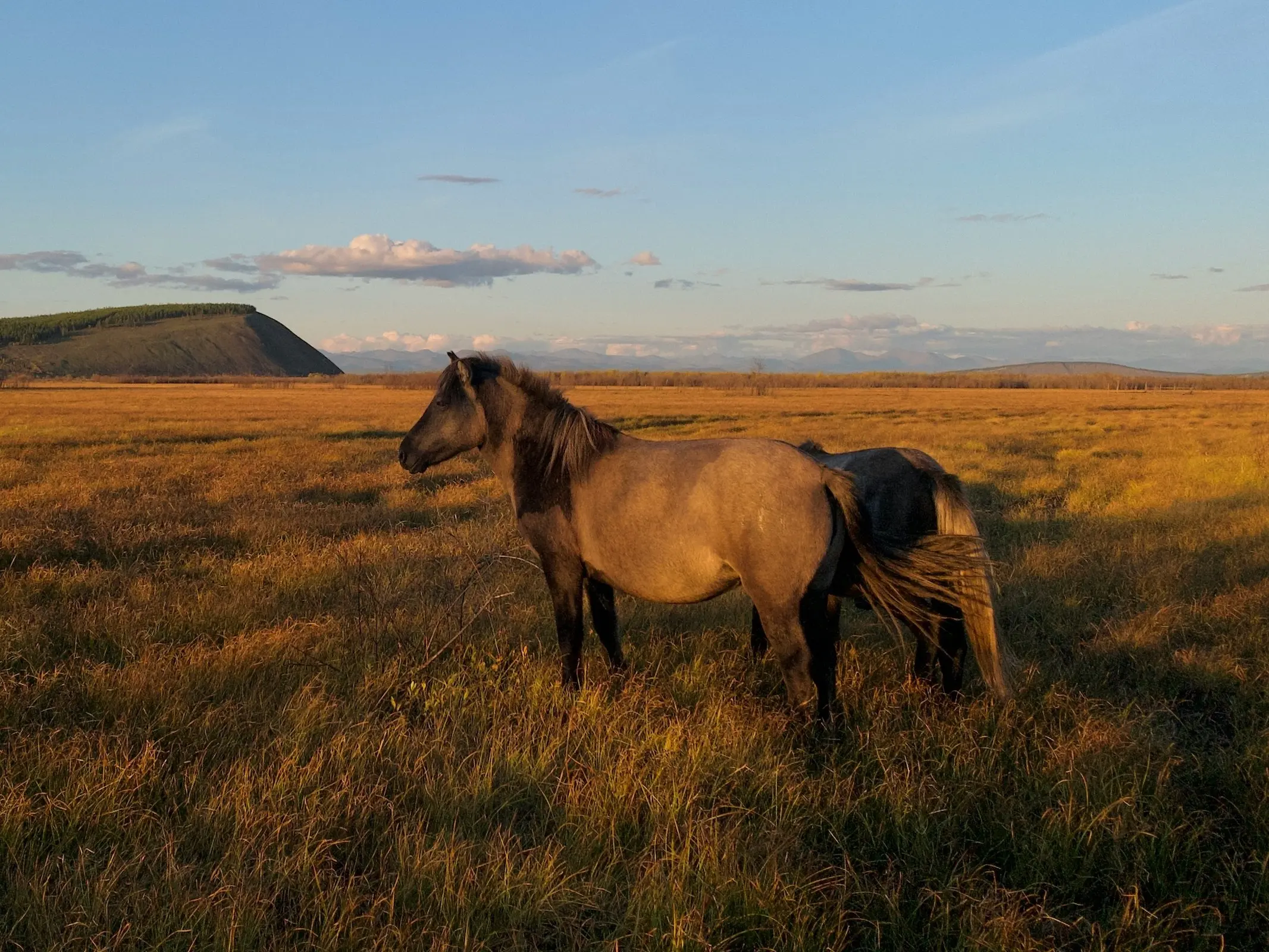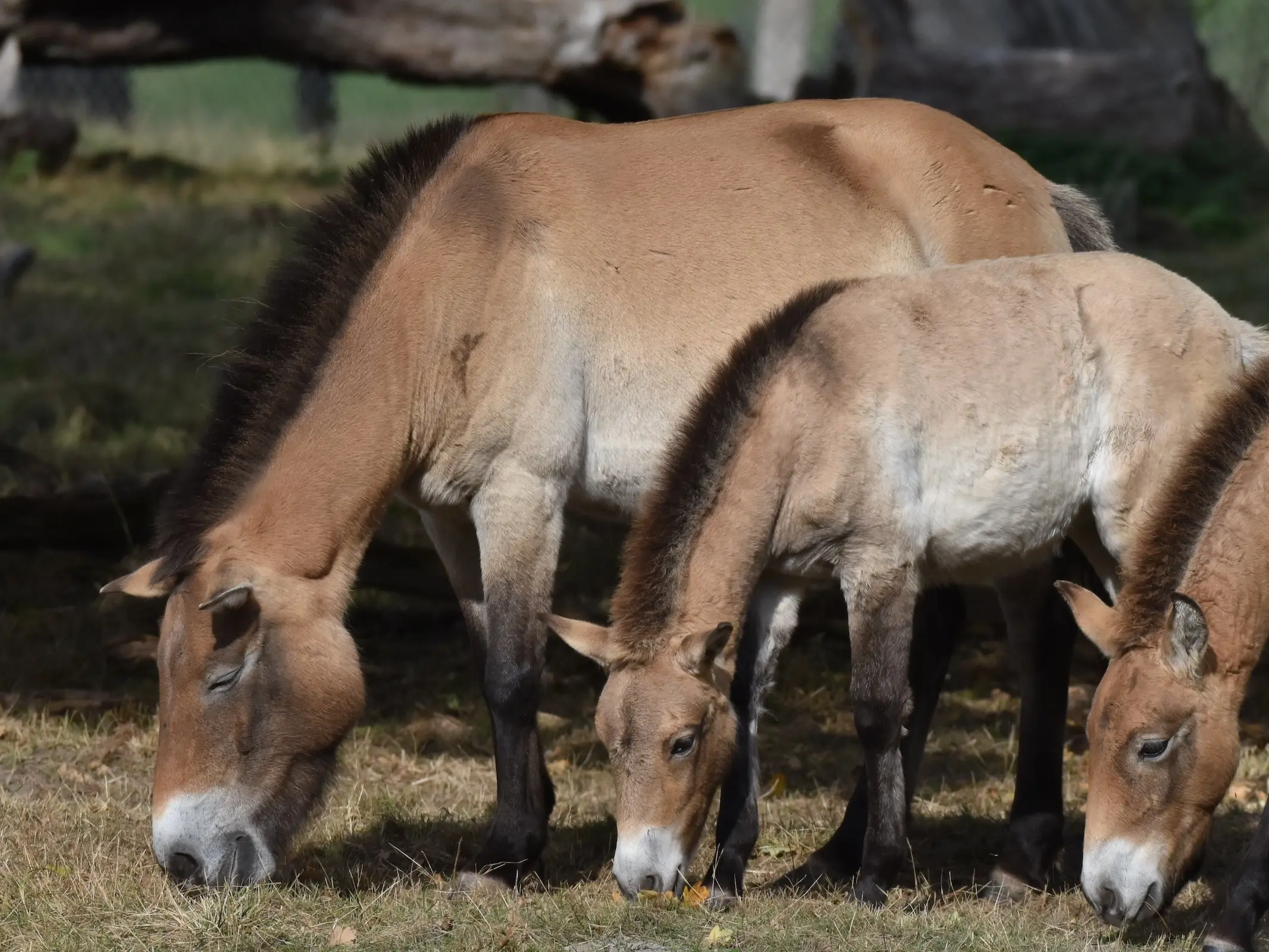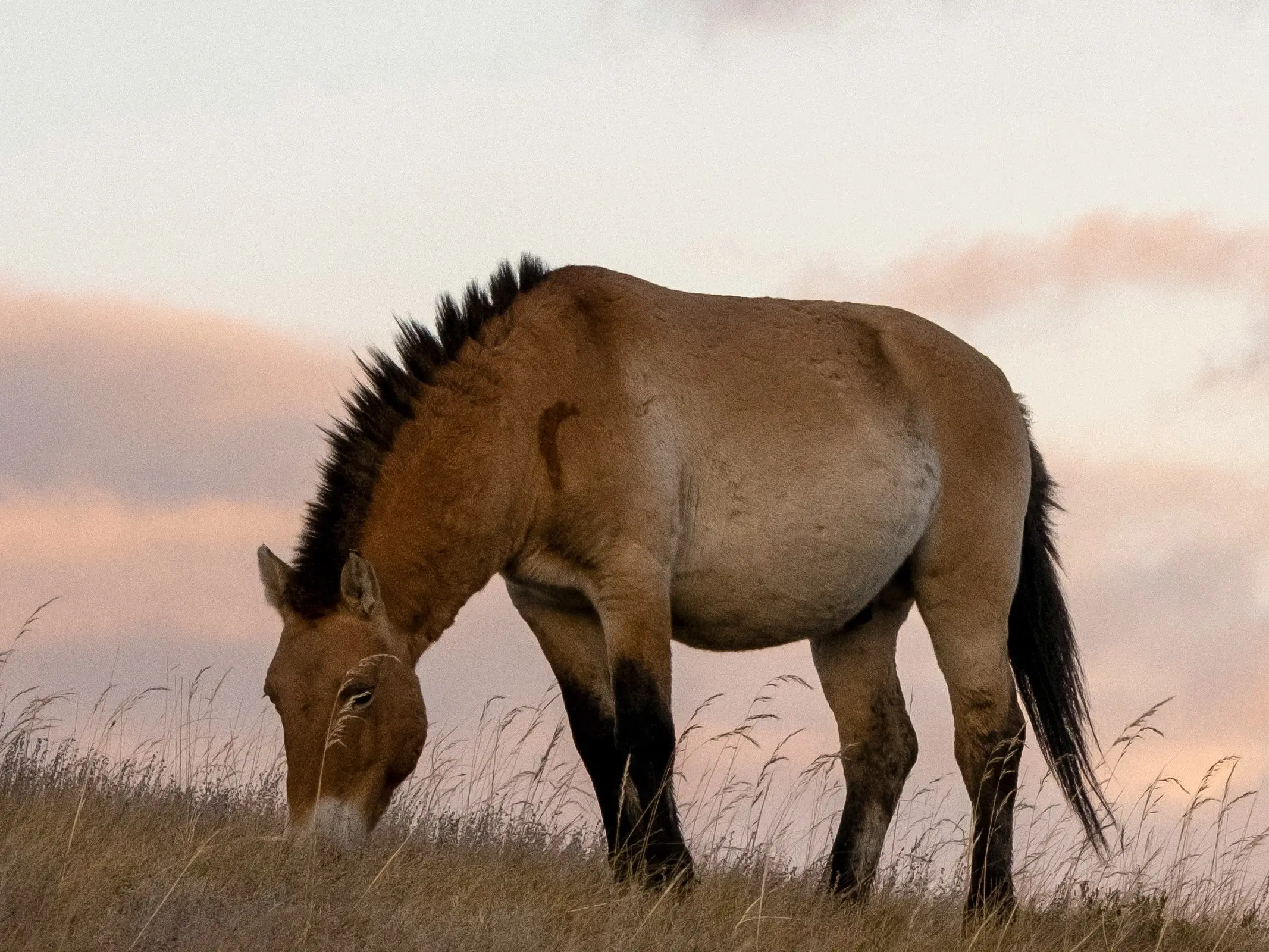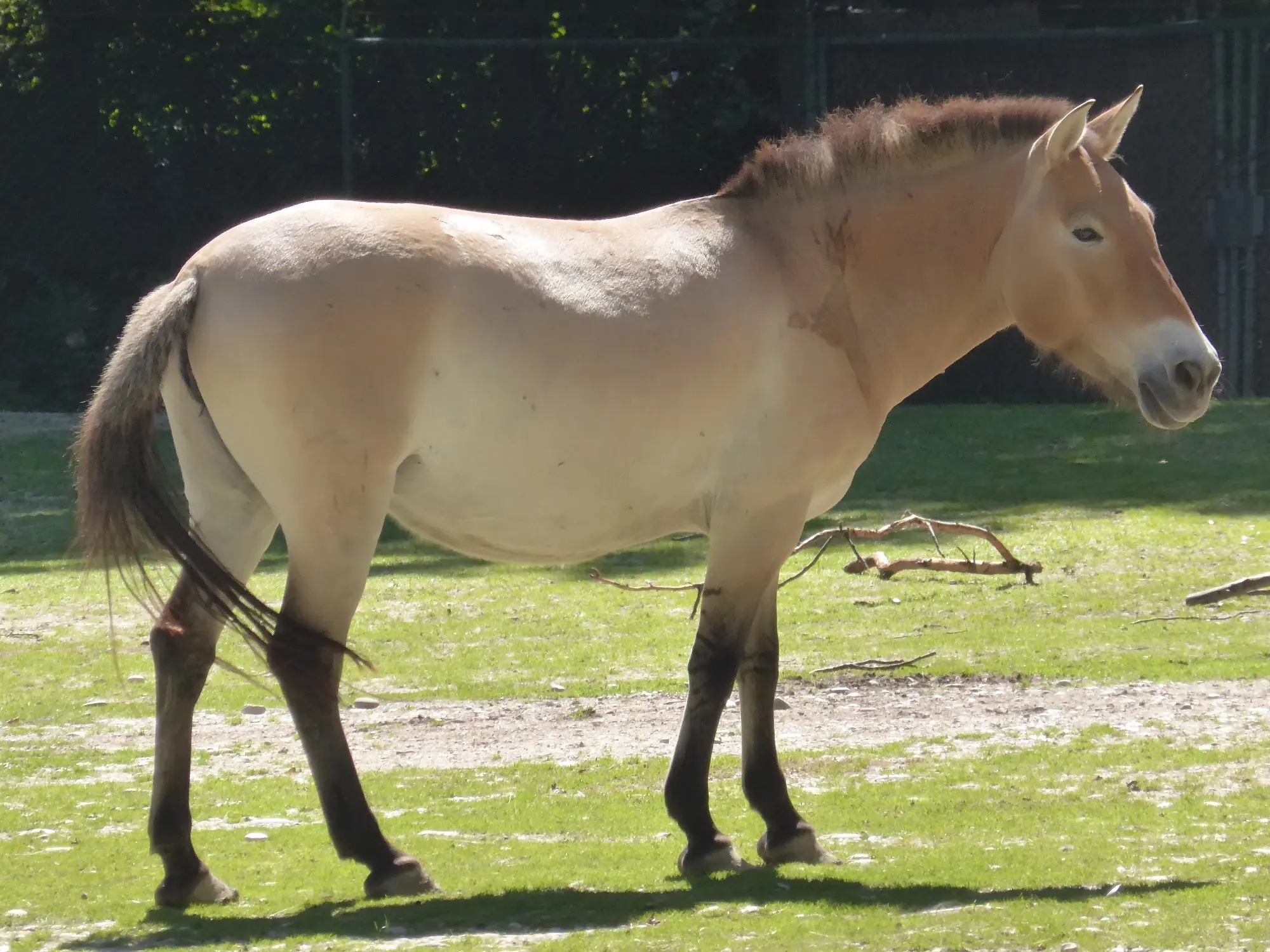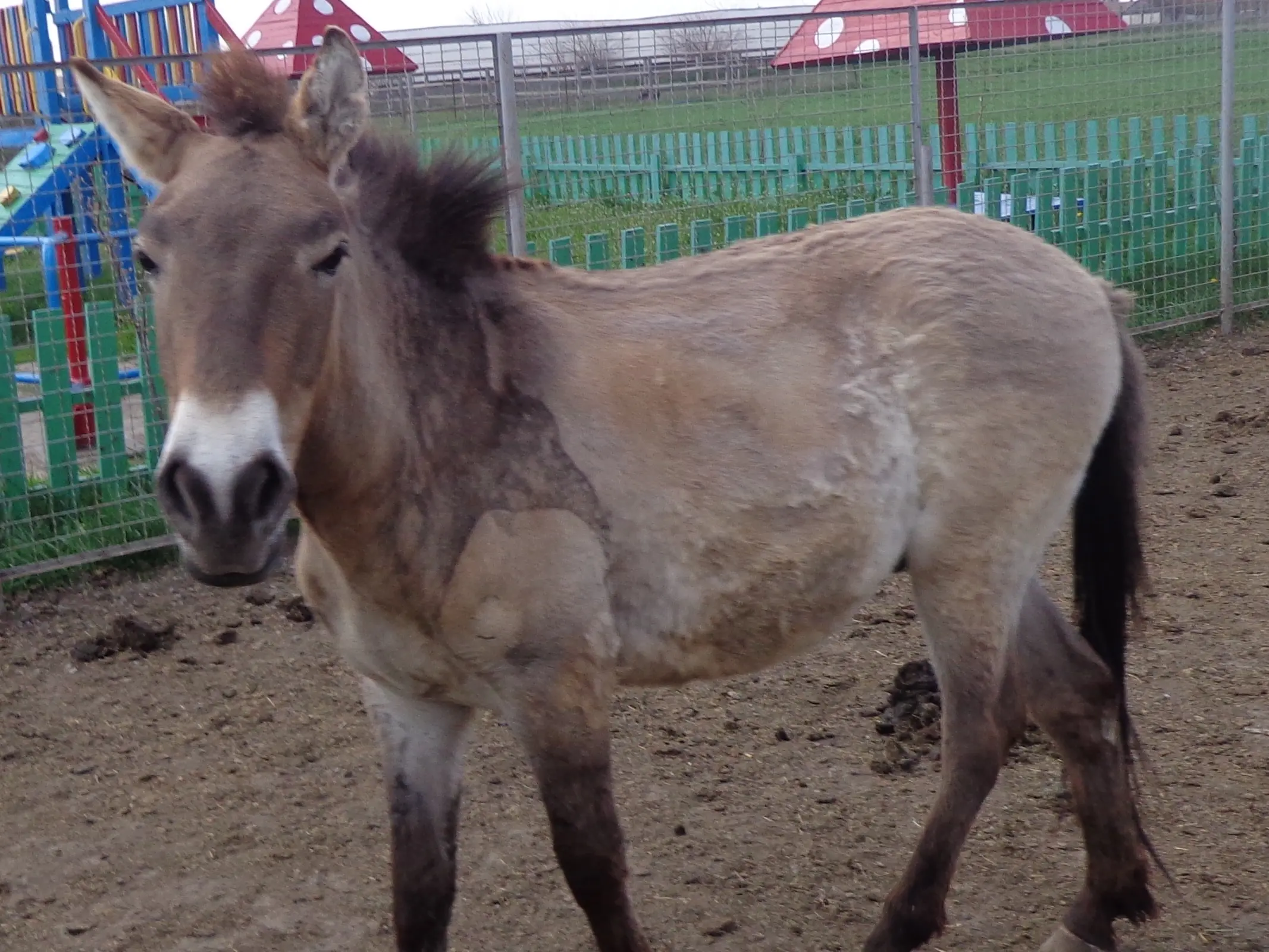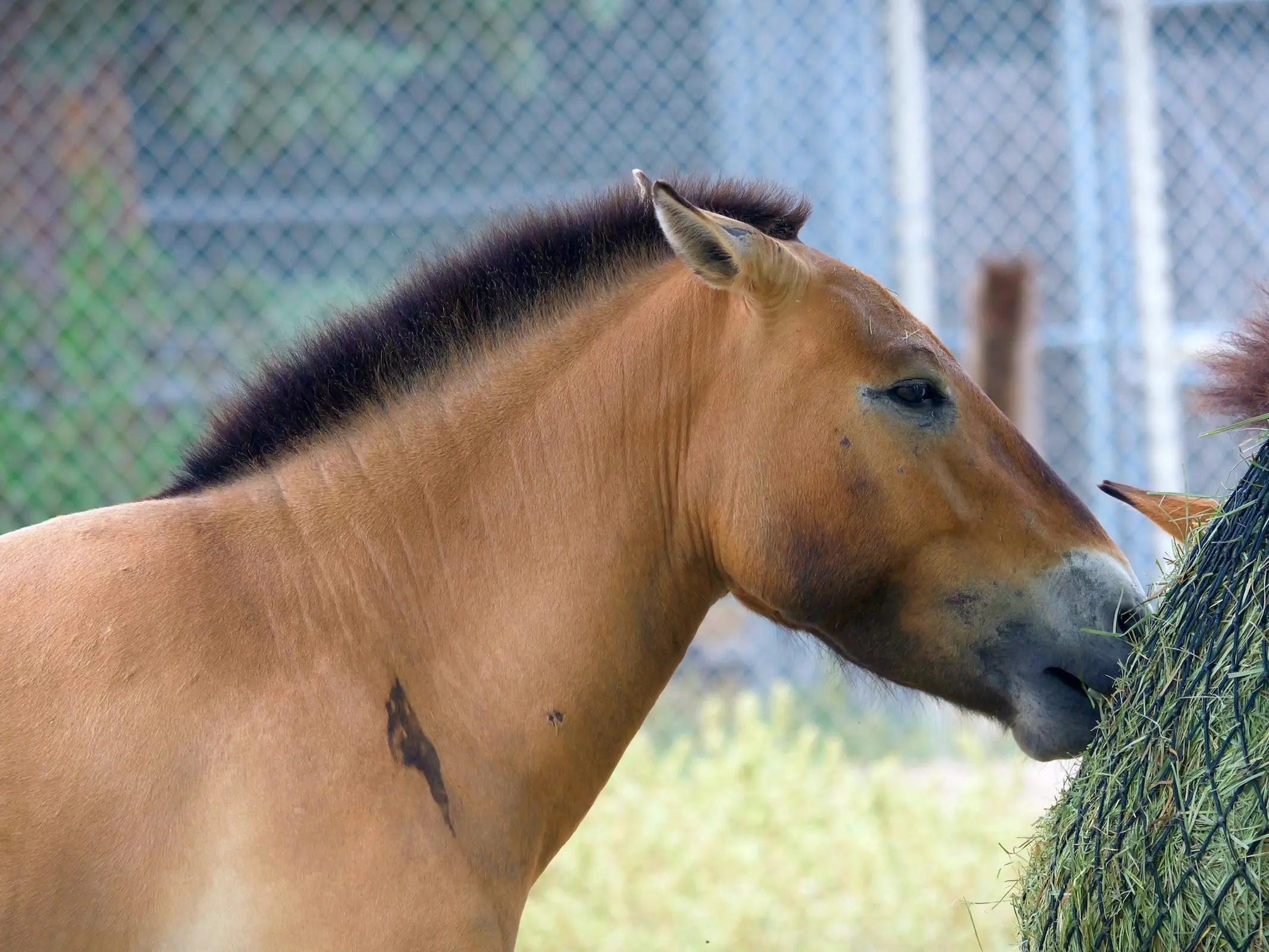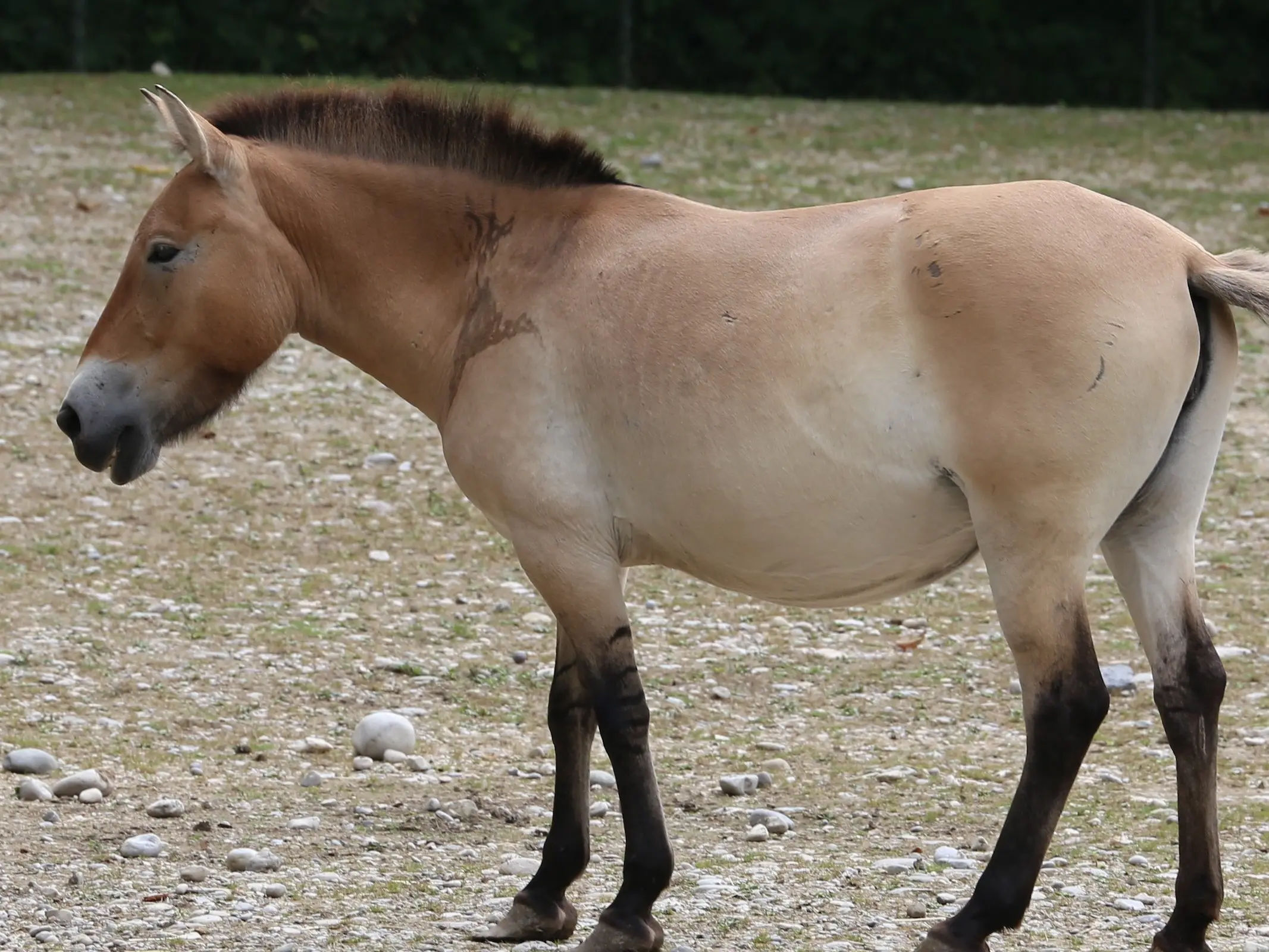Bider marks are a very rare marking and only found in Przewalski’s Horse or Mongolian animals (even in these breeds it’s rare). It has not been confirmed in any other domestic breed of horse. This is a trait believed to have originated with the Przewalskii and passed on to Mongolian animals through crossbreeding (they have lived in the same areas for a very, very long time). The addition of the wild horse bloodlines is believed to make for a faster racehorse and the Mongolians do love a good horse race.
In Mongolia, the name bider is used to describe a conspicuous marking that isn’t linear (like a dorsal or leg striping). Unlike most other primitive markings, biders have an irregular symmetrical pattern. They are irregular dark markings, but found symmetrically on both sides of the neck and composed of skin tissue pigment.
Bider Variations
There are roughly three different variations of bider, which are inherited autosomally and have a mode of inheritance similar to the roan gene.
Small – looks similar to dun counter shading, however it has a more distinct webbing or lacing.
Medium – covers a larger part of the shoulder or creeping up the neck.
Large – covers the whole neck up onto the face.
A Rare Study
In 2007 a study was published in the Journal of Equine Science studying the prevalence of bider marks in Przewalskii and Mongolian horses in Mongolia. While it was found in both breeds, it happened 40 times more often in Przewalskii. Making it considerably rarer among the Mongolian breed.
Generally the markings were found to be darker than the base color and were more difficult to distinguish on black, dark bay, brown and grey. Interestingly for such a rare marking, in the Mongolian horse they were classified into ten types, based on coat color and frequency of appearance. There didn’t seem to be a specific base color that was more prone, although they found it slightly more often on bays, chestnut was second. It was also found to occur roughly evenly between males and females.
